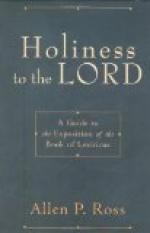After having been slit into the proper widths by the revolving knives, ordinary flat and book papers are cut into sheets by a straight knife revolving at proper intervals on a horizontal drum. The paper, in sheets, is carried by a travelling apron to a receiving table at the end of the machine, where the sheets as they fall are carefully examined by experts, usually women, who remove any that may be imperfect.
The entire length of a paper machine, from the screens to the calenders, is about one hundred and twenty-five feet, while the height varies, the average being about ten feet. The machines, while necessarily of the finest adjustment, are ponderous and heavy, weighing in some cases as much as four hundred tons, this being the weight of the machine itself, exclusive of its foundations. The machine-room is of necessity well lighted and thoroughly ventilated, and should be kept clean throughout, as cleanliness is an essential factor in the making of good paper. While the same general process applies to all classes of paper made, the particular character of any paper that is to be produced determines exactly the details of the process through which it shall pass and regulates the deviations to be made from the general operations in order to secure special results. For example, some papers are wanted with a rough or “antique” finish, as it is called; in such cases calendering is omitted. Another special process is that by which the paper is made with a ragged or “deckel-edge;” this result is obtained in some mills by playing a stream of water upon the edge of the pulp, crushing and thinning it, and thus giving it a jagged appearance. At the present time this “deckel-edge” paper is being quite extensively used in high-class bookwork. In the case of writing papers, as has already been stated in the description of the beating engines, a vegetable sizing made from resinous matter is introduced into the paper pulp while it is still in solution, and mixes with it thoroughly, thus filling more or less completely the pores of the pulp fibers. This is found sufficient for all ordinary book-papers, for papers that are to be printed upon in the usual way, and for the cheapest grades of writing-paper, where the requirements are not very exacting and where a curtailment of expense is necessary. For the higher grades of writing-paper, however, a distinctly separate and additional process is required. These papers while on the machine in web form are passed through a vat which is called the size-tub, and which is filled with a liquid sizing made of gelatine from clippings of the horns, hides, and hoofs of cattle, this gelatine or glue being mixed with dissolved alum and made fluid in the vat. Papers which are treated in this way are known as “animal,” or “tub-sized.”
We have duly described machine-dried papers, but these higher grades of writing-papers are dried by what is known as the loft, or pole-dried process. Such paper is permitted to dry very slowly in a loft specially constructed for the purpose, where it is hung on poles several days, during which time the loft is kept at a temperature of about 100° Fahrenheit.




